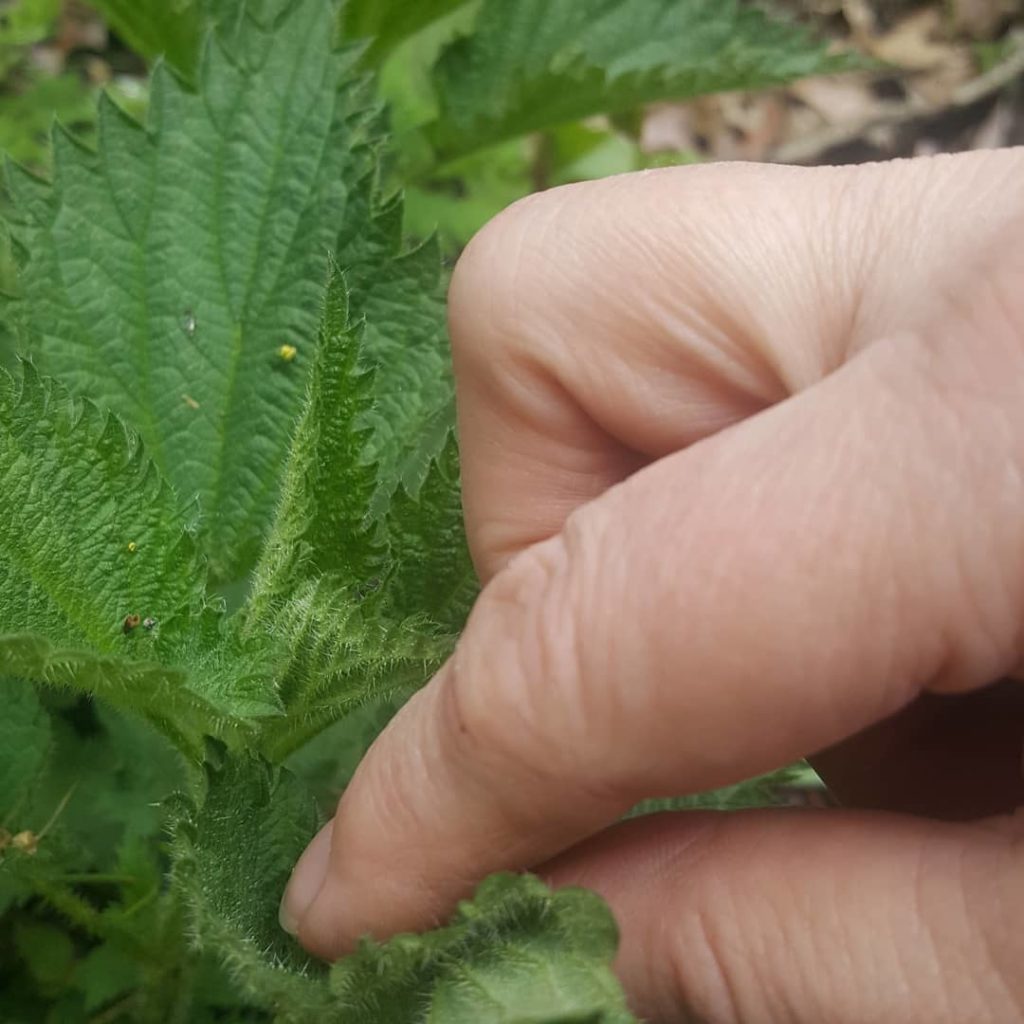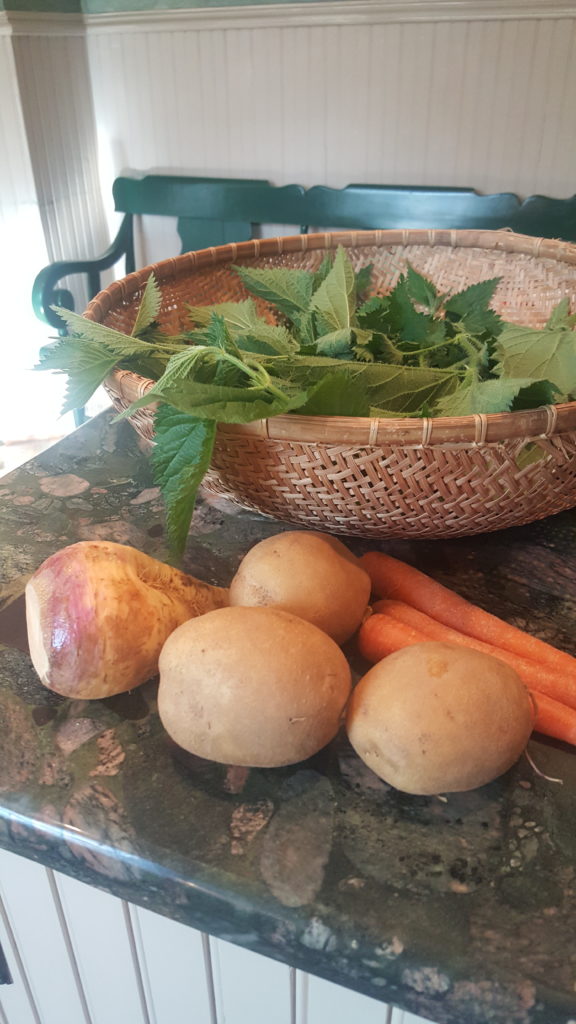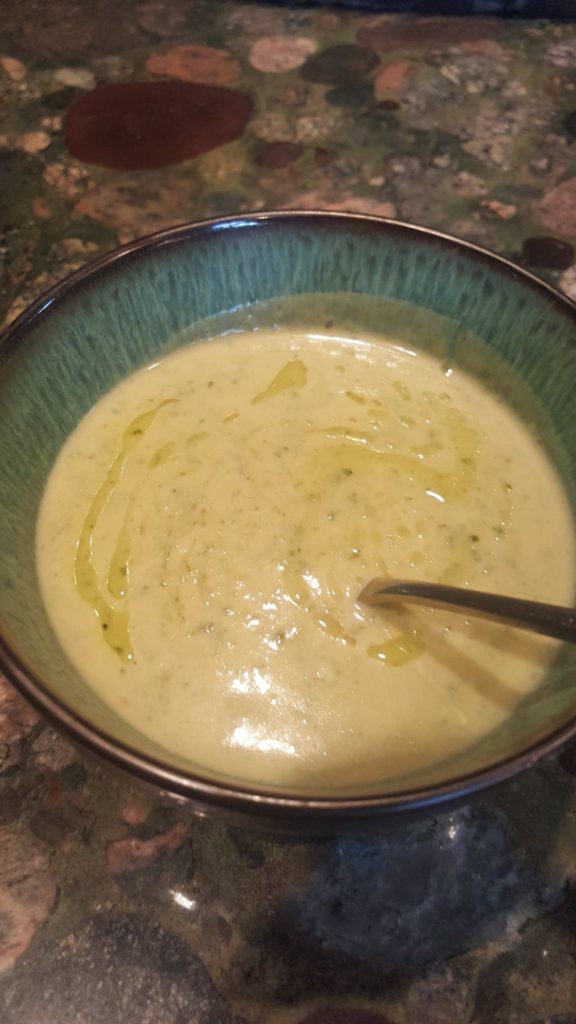I’ve been missing my old blog, so I’ve decided to revive the practice of blogging. With a pot of nettle soup. I hope you enjoy it, and will begin to follow me.

Every Spring I watch for the nettles to appear in the garden. I’m always pretty sure they’ll come back, even though I dig some out as they creep farther out into the part of the garden people are likely to wander into.
Here’s a lovely clump of them growing around the stump of a tree that decided to grow too close to the fence…

I don’t want anyone to get stung… so here’s the secret to harvesting nettles without getting stung. The tiny needle-like “hairs” on the stems and underside of the leaf are where the formic acid is and that’s what stings you. If you are very careful and only touch the top side of the leaves you can harvest with bare hands and not get stung. Much. I reach from above and carefully fold the leaf, then use harvesting snips to cleanly cut the stem, taking only the top few inches. This also encourages more new growth.

Stinging nettle, or Urtica dioica, is originally native to Europe, but now grows wild here in Pennsylvania and in most temperate places around the world. Many years ago I was taught by herbalist Rosemary Gladstar that nettles are the most perfectly balanced food for humans! The balance and range of nutrients is just what our bodies need. We have to eat them in the Spring, before the leaves get too tough, and before the plant begins to flower. Once they flower, their internal chemistry shifts and they’ll be irritating to our urinary tracts.
So far this year I’ve made 3 pints of nettle and chickweed pesto, and had sauteed nettles and scrambled eggs for breakfast several times. Today I’ll make a big pot of soup from an old recipe an English friend sent to me. I never actually follow recipes, I just use them for basic guidance. You can feel free to do the same.

Today, I sauteed a chopped onion in olive oil until its translucent and soft, added a quart and a half of chicken broth to the pot. While the broth was heating, I chopped three nice potatoes, a rutabaga and three carrots, and then added them to the pot. Rutabagas are the result of a marriage between a cabbage and a turnip. They resemble the turnip more, but have a milder taste and creamier texture.
These gorgeous vegetables all came from Fifth Month Farm, and were delivered to my porch last Friday. Because we are in the midst of a global pandemic, COVID-19, we are making every effort to stay home as much as possible. Lots of small businesses, including mine, are offering local delivery or curbside pickup of their produce and wares. Humans are so creative.

In addition to the vegetables in the photo and the nettles, I added 15 or 20 dandelion leaves and a handful of wild spring onion tops. Once it was all cooked, I pureed it with my stick blender, added some heavy cream, salt, pepper & nutmeg.
And then, taking the advice of folklorist Terri Windling, whose blog Myth and Moor I adore, I drizzled a tiny bit of truffle oil on top. Divine.